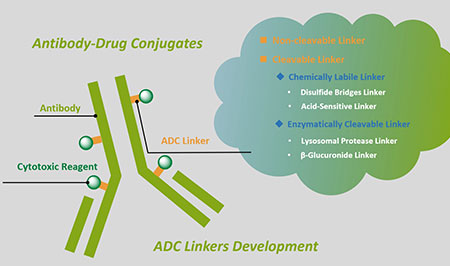1. 17AEP-GA, an HSP90 antagonist, is a potent inhibitor of glioblastoma cell proliferation, survival, migration and invasion
Małgorzata Sekuła, Marcin Majka, Katarzyna Miekus, Jacek Kijowski Oncol Rep . 2012 Nov;28(5):1903-9. doi: 10.3892/or.2012.1996.
Glioblastoma multiforme (GBM) is the most frequent and the most malignant human brain tumor. The expression of receptor tyrosine kinase MET and its ligand hepatocyte growth factor (HGF) is strongly increased in GBM, where they promote tumor proliferation, cell survival, migration, invasion and angiogenesis. We used geldanamycins (GAs) (inhibitors of HSP90) in order to block glioblastoma growth and HGF-dependent cell migration and invasion. The effect of GAs on three GBM cell lines was tested and we found their antiproliferative effect on tumor cells. The maximum level of inhibition reached 70%. After treatment with GAs, cells also became apoptotic as determined by Annexin V-positive staining and activation of the caspase-3 pathway. We examined the expression and activity of the MET receptor on GBM cell lines and we observed phosphorylation of AKT and MAPK after HGF stimulation by western blot analysis. Since GBM cells express high level of MET receptor and were shown to respond to HGF by increased motility we tested if GAs could negatively affect GBM cell movement. In our study, we found that GAs inhibited the chemotaxis of glioblastoma cells toward the hepatocyte growth factor gradient. The GAs also blocked migration of tumor cells through a Matrigel layer in invasion assays. The strongest inhibitory effect was observed for GA and its analog, 17AEP-GA. Based on our results, GAs, particularly 17AEP-GA, could be considered as a new potential agent to treat glioblastoma multiforme.
2. HSP90 is a promising target in gemcitabine and 5-fluorouracil resistant pancreatic cancer
Jakob R Izbicki, Tung Y Tsui, Matthias Reeh, Yogesh K Vashist, Tarik Ghadban, Ulrich Wellner, Judith L Dibbern, Jameel T Miro, Cenap Güngör Apoptosis . 2017 Mar;22(3):369-380. doi: 10.1007/s10495-016-1332-4.
Chemotherapy (CT) options in pancreatic cancer (PC) are limited to gemcitabine and 5-fluorouracil (5-FU). Several identified molecular targets in PC represent client proteins of HSP90. HSP90 is a promising target since it interferes with many oncogenic signaling pathways simultaneously. The aim of this study was to evaluate the efficacy of different HSP90 inhibitors in gemcitabine and 5-FU resistant PC. PC cell lines 5061, 5072 and 5156 were isolated and brought in to culture from patients being operated at our institution. L3.6pl cell line served as a control. Anti-proliferative efficacy of three different HSP90 inhibitors (17-AAG, 17-DMAG and 17-AEPGA) was evaluated by the MTT assay. Alterations in signaling pathway effectors and apoptosis upon HSP90 inhibition were determined by western blot analysis and annexin V/PI staining. The cell lines 5061, 5072 and 5156 were resistant to gemcitabine and 5-FU. In contrast 17-AAG and the water-soluble derivates 17-DMAG and 17-AEPGA displayed high anti-proliferative activity in all tested cell lines. The calculated IC50was below 1 µM. Highly significant down regulation of epidermal-growth-factor-receptor, insulin-like-growth-factor-receptor-1, AKT and MAPK reflected the intracellular molecular signaling-network disruption. Furthermore, besides HSP70 also HSP27 was upregulated in all cell lines. Apoptosis occurred early under HSP90 inhibition and was determined by annexin V/PI staining and CASPASE-3 and PARP assay. In contrast, gemcitabine treated cells did not show any apoptosis. HSP90 inhibition disrupts multiple signaling cascades in gemcitabine and 5-FU resistant PC simultaneously and promotes cancer cell apoptosis. Watersoluble 17-DMAG is equally effective as 17-AAG. HSP27, besides HSP70, may represent an effective response marker of successful HSP90 inhibition.
3. In vitro study comparing the efficacy of the water-soluble HSP90 inhibitors, 17-AEPGA and 17-DMAG, with that of the non‑water-soluble HSP90 inhibitor, 17-AAG, in breast cancer cell lines
Jakob R Izbicki, André Jessen, Matthias Reeh, Sven Mahner, Volkmar Mueller, Yogesh K Vashist, Tarik Ghadban, Judith L Dibbern, Ulrich F Wellner, Cenap Güngör Int J Mol Med . 2016 Oct;38(4):1296-302. doi: 10.3892/ijmm.2016.2696.
Heat shock protein (HSP)90 has emerged as an important target in cancer therapeutics. Diverse HSP90 inhibitors are under evaluation. The aim of the present study was to investigate the growth inhibitory effects of the newly developed water-soluble HSP90 inhibitors, 17-[2-(Pyrrolidin-1-yl)ethyl]amino-17-demethoxygeldanamycin (17-AEPGA) and 17-dimethylaminoethylamino-17-demethoxygeldanamycin (17-DMAG), compared to that of the non-water-soluble HSP90 inhibitor, 17-allylamino-17-demethoxygeldanamycin (17-AAG). The anti-proliferative effects of the 3 drugs on the human breast cancer cell lines, MCF-7, SKBR-3 and MDA-MB-231, were examined in vitro. In addition, tumor progression factors, including human epidermal growth factor receptor 2 (HER2), epidermal growth factor receptor 1 (EGFR1) and insulin-like growth factor type 1 receptor (IGF1R), as well as apoptotic markers were analysed. We found a time- and dose-dependent effect in all the tested cell lines. The effects of 17-AEPGA and 17-DMAG were equal or superior to those of 17-AAG. The 50% growth inhibition concentration was <2 µM for the water-soluble compounds following 72 h of exposure. The significant inhibition of HER2, EGFR1 and IGF1R protein expression was already evident at the concentration of 1 µM. Apoptosis was examined by caspase-3 and poly(ADP-ribose) polymerase (PARP) assay at the concentration of 1 µM of the inhibitors. HSP70 was upregulated, but HSP27 expression was not affected. Our data indicate that 17-AEPGA and 17-DMAG are highly active in breast cancer cell lines and may help to overcome the delivery issues associated with the use of 17-AAG.







